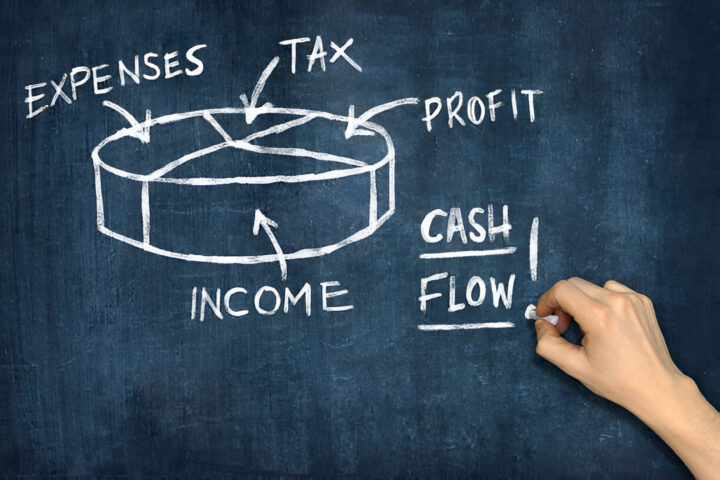June 23,2021
What is Cash Flow Management? How Retailers Can Improve Cash Flow

Cash flow is the lifeblood of every business, and for retailers, it’s no different. In a competitive industry where consumer demands are constantly evolving, managing cash flow can be challenging.
To put it in perspective, 23% of small businesses in the US report a lack of cash flow as their main challenge. Factors such as slow-moving inventory, rising interest rates, and supplier costs contribute to cash flow issues. While some factors are beyond your control, there are strategies to improve and increase your cash flow.
This article provides essential tips and guidance for retailers on cash flow management. Here’s what you’ll learn:
- What cash flow management is
- Cash flow vs. profit
- Why managing cash flow is important
- How to forecast and manage cash flow
- How to improve cash flow in seven ways
What is Cash Flow Management?
Cash flow refers to the amount of money coming in and out of your retail business. When customers buy something, you get paid. Making those sales happen involves cash flowing out for expenses like wages, supplies, materials, distribution, marketing, and more.
Your cash flow is positive when your business has more income from sales than expenses. Cash flow management involves monitoring, analyzing, and adjusting your cash receipts and expenses.
Positive vs. Negative Cash Flow
Positive Cash Flow: When your business has more sales and income than expenses, it can cover costs, reinvest in the business, and set aside funds.
Negative Cash Flow: When your business spends more than it earns, it faces financial difficulties and potential failure.
Important Components of Cash Flow Management
Monitoring Cash Flow: Regularly track all your cash inflows and outflows using accounting software, manual ledgers, or expert advisors. Create cash flow statements to get a clear picture of your financial health. Use retail accounting software like WorrkBox Accounting to make the process efficient and accurate.
Studying Cash Flow Patterns: Analyzing historical cash flow data helps identify trends and patterns, allowing for better planning. For example, seasonal variations can lead to higher sales at certain times of the year and higher expenses at others. This helps in forecasting future cash flows and streamlining inventory management.
Cash Flow vs. Profitability
Cash Flow: The actual money coming in and out of your business.
Profit: An accounting principle representing what’s left after all expenses are deducted from revenue.
How to Calculate Net Profit: Net profit is typically given as a percentage. To calculate it, divide your net profit by your total revenue and multiply by 100.
Why Cash Flow Management is Important
Cash flow is critical for all businesses and a leading reason for business failure. Poor cash flow management means businesses can’t pay themselves, vendors, or lenders.
Why Retail Cash Flow Management Matters
For retailers, managing cash flow involves turning stock quickly and maintaining a healthy gross profit margin on each sale. According to Catherine Erdly, founder of Future Retail Consulting, poor cash flow management often results from inadequate profit margins on sales and poor stock management.
Improving Retail Cash Flow in 7 Ways
- Optimize Inventory Management: Avoid overstocking and ensure slow-moving items are cleared promptly.
- Negotiate Better Terms: Work with suppliers to secure better payment terms.
- Improve Sales Forecasting: Use historical data to predict demand and manage stock levels effectively.
- Control Expenses: Regularly review and cut unnecessary costs.
- Increase Margins: Adjust pricing strategies to enhance profit margins on each sale.
- Enhance Payment Processes: Streamline payment systems to ensure timely customer payments.
- Utilize Technology: Invest in retail accounting software to track and manage cash flow efficiently.
Conclusion
Effective cash flow management is vital for the success of any retail business. By understanding and implementing these strategies, retailers can improve their cash flow, enhance profitability, and ensure long-term stability. For further insights on increasing profit margins, check out our article on “How Retailers Can Increase Profit Margins: 20 Proven Ways to Improve Profitability.”
Optimizing your cash flow can transform your business. Start today to secure a financially healthy future for your retail operation.
Want more inspiration and business tips?
We are committed to keeping your information safe. Read our Privacy Policy to find out more.



